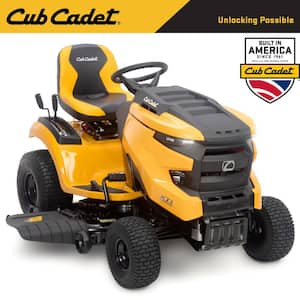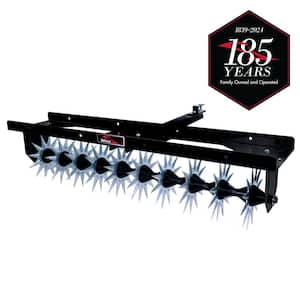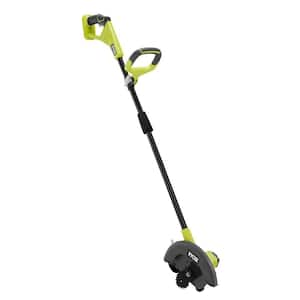Do you have what you need to make your garden grow?


Garden Center
Store Hours
Mon-Thu:
6:00am - 10:00pm
Fri:
6:00am - 8:00pm
Sat:
6:00am - 10:00pm
Sun:
7:00am - 8:00pm
Curbside:
09:00am - 6:00pm
Location
Popular at Your Garden Center
Summer Garden Center Supplies
Popular Garden Center Live Plants
Garden Project Calculators
;Resize=(703,395.44))
Grass Seed Calculator
When you're ready to seed your lawn, our calculator helps you estimate the amount of grass seed you'll need to get the job done.
;Resize=(703,395.44))
Mulch Calculator
Enter your preferred material, the square footage and mulch depth of the coverage space for accurate results.
;Resize=(703,395.44))
Fencing Calculator
We'll calculate the amount of fencing you should purchase based on your property needs.
Shop Outdoor and Garden Brands
Frequently Asked Questions About Your Store
How do I treat weeds?
Weeds are likely poking through in the garden beds, even if you put down a landscape liner fabric or mulch to keep them at bay. Be sure to get them before they go to seed. Pull weeds from the root in vegetable gardens, and dig up the roots if the weed snapped off without them. If you choose to treat weeds with weed killer, find one that's safe for pollinators and pets — and wear thick rubber gloves and a respirator to ensure that it doesn't touch your lungs or skin.
How do I fix grass damaged by pets?
The solution for how to get burnt grass green again is easy: Fix the scorched spot with a good long drink. Continue to water it regularly. It should perk up within a week. On the other hand, the method for how to treat grass from dog urine isn't as simple. Grass damaged by pets must be removed, neutralized, and replaced in fresh soil with new grass or patch and repair grass seed.
What's the best time to water flowers?
If you can water during the evening or in the early morning, that's ideal. Watering during the heat of the day means a great deal of the moisture will evaporate. This applies to whatever you're growing: trees, gardens, and lawns. Whenever you water, give all the plants a good drink, and don't skip it if it's not the best time. The plants still need hydration, no matter what time it is. Depending on your climate, grass type, and lawn health, you may also want to look into adding a lawn fertilizer.
Should I fertilize my plants?
Once you've got your plants in the ground, make sure they stay hydrated and well-fed. Choose a synthetic or an organic fertilizer that suits your needs and gives your garden a boost. You can even find one that's formulated for your plants, whether you need a flower fertilizer, vegetable fertilizer, citrus tree fertilizer, or general garden fertilizer blend. Only apply as often as recommended on the packaging. Remember to always water immediately after, as directed, so the plants won't be burned by the fertilizer.
How can I keep cool this summer?
When you need a break from relentless summer heat, shelter beneath a patio umbrella or covered gazebo. If you have sturdy structures like a house, make your own shade by attaching awnings and shade sails. However, sometimes shade isn't enough because it's just too humid out. That's when a patio mister or misting fan can help cool the air and turn a stifling afternoon into a relaxing day. Return to lounging in the sun when that chilled air is ready.
What do you carry for backyard entertaining?
Backyard entertaining is whatever you'd like — it doesn't have to be a barbeque party. Some focus on the grill or fire pit, while others concentrate on yard games. Many people relax outdoors and chat away the afternoon or maybe cook a meal in an outdoor kitchen instead. However you bond, extend the fun into the evening with proper outdoor lighting and a bug-free yard without pesky mosquitos.
Garden Project Ideas

Protect wood from carpenter bees with our guide on sealing surfaces, using traps, and applying safe pest control methods.

Check out our tips on banishing gnats indoors and out using traps, sprays, and moisture control to keep your home pest-free.

Safely remove poison ivy with our guide on protective gear, cutting techniques, and herbicide use for effective eradication.

Maintain a healthy lawn using organic methods like manual weeding, natural herbicides, and proper lawn care practices.

Grow apples successfully with our guide on choosing varieties, planting, pruning, and pest control for a bountiful harvest.

Cultivate thriving grapes with our step-by-step tips on site selection, trellising, pruning, and disease prevention.
The Home Depot Garden Center at Washington Twsp/Monroe
Find Deals at Our Garden Center 4th of July SaleWelcome Independence Day with a yard that's dressed to impress. Our big 4th of July Sale can help you do it. To get your grass and trees in shape, we carry outdoor power equipment, including string trimmers, lawn mowers, and hedge trimmers. Fresh fertilizer and another round of mulch might be just what the doctor ordered to perk up your garden. Continue watering to enjoy a stunning summer garden.
Celebrate Summertime Gardening
As we continue deeper into summer, your landscaping and garden will weather more sun and heat than earlier in the season. That means you'll need to consider how to keep things cool with proper tending and irrigation. Just like we can get sunburned, plants can dry out, grass can get scorched, and trees can lose their leaves prematurely. We've got advice to help you, your garden, and your lawn sail through the hotter months with flying colors.
Lawn Repair and Patching
Scorched, or burnt, grass has a distinctively shaped discoloration that isn't green. It happens when a reflective surface shines continuously on your lawn, or plastic or metal sits on the grass and bakes in the sunlight. You'll discover it once you move something sitting out in the yard, like a trash can or hose. Car windows or mirrors can also scorch grass when the sun angle is just right.
Water burnt grass well and wait a week or so. You should see the signs of life returning by then. If it's damaged by pet urine or otherwise unsalvageable, you'll need to replace the grass or use patch and repair seed to fix it up.
Whether you’re doing upkeep on your current lawn or patching the bare spots, keep in mind which type of grass it is and tailor your lawn care accordingly. Match the grass type to your lawn if you're doing patch repair. When planting new grass, choose a variety that works with the amount of sun your lawn gets. For example, if your lawn gets full sun, make sure you plant grass that thrives in the sunlight instead of a type that prefers shade or dappled sun.
Watch Your Garden Thrive
Much of your garden's upkeep comes down to balancing water and sun. You'll need both to keep plants growing and spirits high with summer flowering. A general rule when watering flowers and plants is to water the roots. A garden hose, sprinkler or sprinkler system, or drip irrigation system can get the job done. Contrary to popular belief, the blooms themselves don't need to be watered or even misted. Many flowers droop and wilt when they get wet, but they’ll recover once they dry off. Succulents are the exception to basic watering rules, so look up your specific succulent types to optimize their care.
In addition to watering, keep an eye on the nutrients your plants are getting. Use plant food and fertilizer as recommended. We've even got fertilizers to match the plant types you're growing so they'll absorb the right nutrients.
Vertical Edible Gardening
Grow produce vertically for a smart use of space. Many veggie plants are vines and well-suited to climb a fence or trellis, so plant them next to one. The key to success is supporting the stem, fruit, and branches. This is so the weight of the plant doesn't snap the the branches or stem Fasten the plant to a trellis, fence, or pole with string, plant ties and wires, garden wire, or fabric strips. Be sure to attach each plant loosely. Then, the stem has room to grow wider and the leaves and branches can sway in the breeze.
Cucumbers, watermelon, strawberries, and tomatoes need support as they bear fruit. Melons and squash require hammocks made of string, a sling, old nylons, or other stretchy fabric to support the weighty produce. All of these plants take up less space on the ground this way, which allows you to have walking room between plants or fit even more of them.
Trees as Natural Shade
Trees are the ultimate natural source of shade, and they can change the appearance of your yard. Whether you plant a few trees or a small forest, keep in mind this is a long-term commitment. Trees live many decades when they're healthy. Before you shop, plan so you know how to plant a tree — whether they're deciduous tree saplings, evergreens, or more mature trees.
A house framed by beautiful trees can seem picture-perfect, but research the specific trees you want before planting them. Consider the full-grown size of the trees you want, how deep the taproots go, and how far the root ball extends outward. Trees will always find the easiest source of water, so be sure to plant them away from your water pipes to avoid roots growing into them. A tree with a full canopy of leaves catches wind like a sail, so make sure it's planted a safe distance from your home.
If you've researched and planned, found trees you love, and know the perfect places to put them, get planting. That way, you can enjoy the leaves rustling in the breeze and dappled shade as soon as possible.
Find Your Summertime Supplies Today
No matter if your perfect summer includes grilling, relaxing, gardening, or knocking out those outdoor DIY projects, we've got everything you need to keep you covered. Make the most of these lengthy evenings and early mornings to enjoy all the season has to offer. Shop online, on our app anywhere you like, or in the aisles of your Washington Twsp/Monroe store.
Nearby Stores
Find Another Store
116 Walker Ave
West Berlin, NJ 08091
7.71 mi
Mon-Thu: 6:00am - 10:00pm
Fri: 6:00am - 8:00pm
Sat: 6:00am - 10:00pm
Sun: 7:00am - 8:00pm
1370 Hurffville Rd
Deptford, NJ 08096
7.75 mi
Mon-Thu: 6:00am - 10:00pm
Fri: 6:00am - 8:00pm
Sat: 6:00am - 10:00pm
Sun: 7:00am - 8:00pm
320 Bridgeton Pike
Mantua, NJ 08051
9.38 mi
Mon-Thu: 6:00am - 10:00pm
Fri: 6:00am - 8:00pm
Sat: 6:00am - 10:00pm
Sun: 7:00am - 8:00pm
)






)
/17_514245_S_012_Product%20Image%20(square).jpg?im=Resize=(300,300))
)
/2023_P2_Rain_Barrels_Product%20Image%20(square).jpg?im=Resize=(300,300))
)
)
)
;Resize=(300,300))
)
;Resize=(300,300))
;Resize=(300,300))
)
;Resize=(300,300))
;Resize=(300,300))
)
/12_SOIL_B_0420_Social%20media%20(square).jpg?im=Resize=(300,300))
;Resize=(300,300))
;Resize=(300,300))
;Resize=(300,300))
;Resize=(300,300))
)
;Resize=(300,300))
)
;Resize=(300,300))
;Resize=(300,300))
/18Patio_Camden_Seagrass_5pcSeating_Planters_302468736_DTL3_L_Social%20media%20(square).jpg?im=Resize=(300,300))
;Resize=(300,300))
;Resize=(300,300))
)
;Resize=(300,300))
;Resize=(300,300))
;Resize=(300,300))
)
)
.jpeg?im=Crop,rect=(363.69230769230774,1.2307692307692308,958.7692307692308,958.7692307692308);Resize=(300,300))
;Resize=(300,300))
;Resize=(300,300))
)
)
)
;Resize=(300,300))
;Resize=(300,300))
)
;Resize=(300,300))
)
)
;Resize=(300,300))
)
;Resize=(300,300))
)
;Resize=(300,300))
;Resize=(300,300))
)
)
)
;Resize=(300,300))
;Resize=(300,300))
/Dorado_Tropical_Combo_14in_Product%20Image%20(square).jpg?im=Resize=(300,300))
;Resize=(300,300))
/2023_2_Cactus_Plants_Product%20Image%20(square).jpg?im=Resize=(300,300))






































